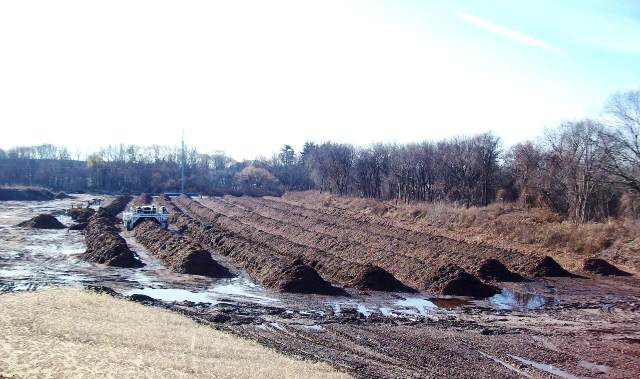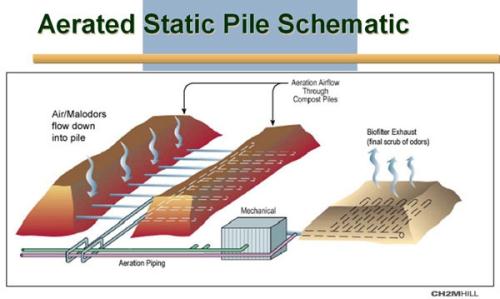COMPOSTING

Compost is organic matter that has been decomposed and recycled as a fertilizer and soil amendment. Compost is a key ingredient in organic farming. At the simplest level, the process of composting simply requires making a heap of wetted organic matter known as green waste (leaves, food waste) and waiting for the materials to break down into humus after a period of weeks or months. Modern, methodical composting is a multi-step, closely monitored process with measured inputs of water, air, and carbon- and nitrogen-rich materials. The decomposition process is aided by shredding the plant matter, adding water and ensuring proper aeration by regularly turning the mixture. Worms and fungi further break up the material. Aerobic bacteria manage the chemical process by converting the inputs into heat, carbon dioxide and ammonium. The ammonium is further converted by bacteria into plant-nourishing nitrites and nitrates through the process of nitrification.
Compost can be rich in nutrients. It is used in gardens, landscaping, horticulture, and agriculture. The compost itself is beneficial for the land in many ways, including as a soil conditioner, a fertilizer, addition of vital humus or humic acids, and as a natural pesticide for soil. In ecosystems, compost is useful for erosion control, land and stream reclamation, wetland construction, and as landfill cover (see compost uses). Organic ingredients intended for composting can alternatively be used to generate biogas through anaerobic digestion. Anaerobic digestion is fast overtaking composting in some parts of the world (especially central Europe) as a primary means of downcycling waste organic matter.
Types of Composting
Backyard Composting
Backyard or onsite composting can be conducted by residents and other small-quantity generators of organic waste on their own property. By composting these materials onsite, homeowners and select businesses can significantly reduce the amount of waste that needs to be disposed of and thereby save money from avoided disposal costs.
Types of Waste and Waste Generators: Backyard or onsite composting is suitable for converting yard trimmings and food scraps into compost that can be applied on site. This method should not be used to compost animal products or large quantities of food scraps. Households, commercial establishments, and institutions (e.g., universities, schools, hospitals) can leave grass clippings on the lawn-known as “grasscycling”-where the cuttings will decompose naturally and return some nutrients back to the soil. Backyard or onsite composters also might keep leaves in piles for eventual use as mulch around trees and scrubs to retain moisture.
Climate or Seasonal Considerations: Climate and seasonal variations do not present major challenges to backyard or onsite composting because this method typically involves small quantities of organic waste. When conditions change-for example, if a rainy season approaches-the process can be adjusted accordingly without many complications.
Environmental Concerns: Improper management of food scraps can cause odors and also might attract unwanted attention from insects or animals.
Requirements: Backyard or onsite composting requires very little time or equipment. Education is the most critical aspect of backyard or onsite composting. Local communities might hold composting demonstrations and seminars to encourage homeowners or businesses to compost on their own properties.
Results: The conversion of organic material to compost can take up to two years, but manual turning can hasten the process considerably (e.g., 3 to 6 months). The resulting natural fertilizer can be applied to lawns and gardens to help condition the soil and replenish nutrients. Compost, however, should not be used as potting soil for houseplants because of the presence of weed and grass seeds.


